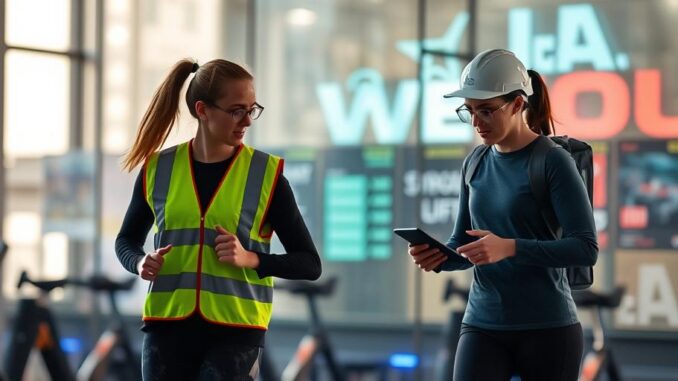
Summary
This article explores the multifaceted approach to preventing falls in older adults, emphasizing exercise, medication management, home safety modifications, and the integration of technology. It highlights the importance of a personalized approach, considering individual risk factors and health conditions. By embracing these strategies, we can empower seniors to maintain their independence and well-being.
** Main Story**
Okay, let’s talk about something really important: keeping our older adults on their feet, literally. Falls, they’re a massive deal for seniors. I mean, we’re talking injuries, less freedom, and a real hit to their quality of life. And, as our population gets older, we really need to get smart about preventing them. It’s not just one thing, it’s a whole bunch of things working together.
A 360-Degree Approach to Staying Upright
Look, preventing falls isn’t about a single quick fix; it’s like, a multifaceted strategy. It’s about hitting all the potential problem areas:
-
Get Moving! Physical activity, especially the kind that boosts balance and strength is everything. Tai chi, yoga – those are great. Even just a daily walk. I always tell my grandma it’s better than nothing, but you should definitely get the all clear from a doctor before starting anything new. Don’t want to make it worse.
-
Medication Check-Up: Have you ever thought about your medications and if they’re making you feel dizzy or sleepy? Because that would be a really easy way to fall! It’s really important to sit down with your doctor or pharmacist to review all of your medications. Maybe there are adjustments that can be made.
-
Home Sweet (and Safe) Home: Creating a safe space at home can really reduce your fall risk. Get rid of loose rugs, declutter, improve lighting, and put grab bars in the bathrooms. These simple changes can make a big difference.
-
See and Hear Clearly: You know, if you can’t see or hear properly, your risk of falls goes way up. Regular eye and hearing checks are crucial. Updating those glasses and hearing aids? Absolutely. Don’t skip those appointments.
Sure, those general tips are helpful, however, each of us has our own unique risk factors and health conditions which we should keep in mind when preventing falls.
Tailoring the Approach: It’s Personal
So, while those general tips are great, it’s really about personalizing the approach. What works for one person might not work for another.
Understanding Your Unique Needs
First off, getting a healthcare pro to do a proper fall risk assessment is a must. I mean, they’ll look at your medical history, meds, balance, how you walk, your home setup—the whole nine yards. And, based on that, they can create a plan that’s just for you.
Tackling Underlying Health Issues
Certain health issues like arthritis, Parkinson’s, or diabetes? They can seriously up your chances of falling. Getting those under control – whether it’s through meds, physical therapy, or other treatments – is key. I’ve seen it firsthand; my uncle’s arthritis was making it so hard for him to move around, increasing the likelihood of falls, but when he began to manage it effectively, that changed everything.
Tech to the Rescue
And, let’s not forget technology; it’s offering some really cool solutions.
-
Wearables and Sensors: Think smartwatches or those fall detection pendants. If you fall, they automatically alert someone. Peace of mind, right? And, that rapid assistance can be a game-changer.
-
Smart Home Tech: Smart home systems can also enhance safety. Motion sensors can detect falls and alert caregivers. Voice-activated assistants can even help seniors call for help if they need it.
-
Telehealth and Monitoring: Telehealth is another great option! It can help monitor vital signs and health conditions remotely. This means spotting potential issues early and stepping in when needed. Isn’t that neat?
Empowering Independence
Ultimately, it’s about empowering seniors to stay independent and healthy. When we embrace this holistic and personalized approach to fall prevention, we are able to really empower seniors. By integrating tech, promoting healthy habits, and taking proactive steps, we’re able to reduce fall risk and promote healthy aging. And, as tech keeps evolving, I’m excited to see even more innovations that can support seniors in living safe and fulfilling lives. It’s not just about preventing falls; it’s about fostering a sense of independence and well-being.


So, you’re saying wearables are the future of fall prevention? Do you think we’ll eventually have smart wallpaper that inflates like airbags when someone stumbles? Asking for a friend… who’s a clumsy millennial.
That’s a hilarious idea! Smart wallpaper airbags would be next-level fall prevention. I think we’re still a little ways off from that, but the potential for tech to make homes safer is huge. Wearables are just the beginning! What other creative safety solutions can you imagine?
Editor: MedTechNews.Uk
Thank you to our Sponsor Esdebe
The point about medication reviews is crucial. Many don’t realize how prescriptions, even when taken as directed, can contribute to balance issues. Perhaps AI-powered tools could assist pharmacists in identifying potential fall-risk interactions more efficiently.
Absolutely! The potential of AI in medication reviews is huge. It could really streamline the process for pharmacists, helping them quickly identify those subtle but significant drug interactions that contribute to fall risk. This would be a fantastic step forward for proactive senior care. Thanks for highlighting this!
Editor: MedTechNews.Uk
Thank you to our Sponsor Esdebe